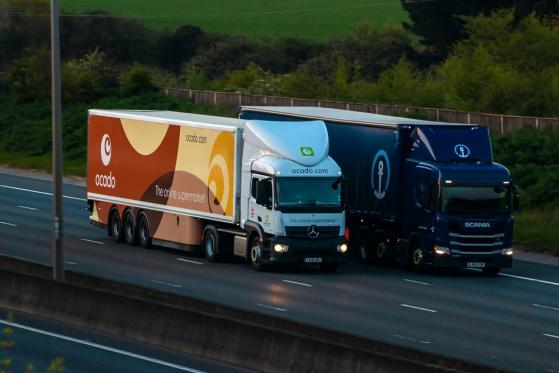Ocado (LON: LON:OCDO) share price has continued to underperform the market as investors remain worried about its business and profits. It has crashed by almost 50% this year while the blue-chip FTSE 100 index has risen by about 4%.
£4.5 billion has gone
Ocado Group is a top British technology company that runs a popular e-commerce platform through its joint venture with Marks and Spencer (LON:MKS). It also provides warehousing and logistics solutions to retail groups around the world.
Ocado is also well-known for raising loads of cash. Since 2000, the company has raised over £4.5 billion from investors, most of which is now gone. It raised £1 billion at the onset of the pandemic under friendly terms as investors saw it as a winner.
Ocado refinanced some of that debt in July at an exorbitant price because interest rates are significantly higher and its stock has crashed. The company is planning to raise more cash, about £600 million through new bonds. It will use these funds to pay back some of its debt.
Ocado has used the £4.5 billion in research and development; it holds almost 2,000 patents, mostly in its technology group. These patents helped the company win £200 million from AutoStore in 2023.
Ocado faces substantial challenges
Ocado Group’s business has had a mixed performance in the past decade. On the positive side, its annual revenues have soared from over £551 million in 2010 to over £2.8 billion in the last financial year.
This growth happened as its e-commerce platform gained more popularity, especially during the Covid-19 pandemic. Its often-expensive warehousing business has also attracted customers like Kroger (NYSE:KR), Casino Group, Coles, Lotte, and Sobeys. Its 13 retail companies have over £250 billion in annual sales.
However, the key challenge is that Ocado has not been not achieved profitable growth, a move that has pushed many investors away. In its most recent annual report, Ocado said that its loss before tax came in at £394 million, lower than the £501 million it made a year earlier. Most of its losses come from depreciation, amortisation, and impairment.
The other big challenge that some Ocado warehousing clients are reconsidering tweaking their contracts while Ocado has slowed its rollout.
The most high-profile customer was Canada’s Sobey’s announced that it would pause the construction of a facility in Vancouver. It has also ended its exclusive relationship with Ocado, meaning that it could start working with other companies.
Kroger, one of the biggest American retailers, has also said that it would shutter its smaller sites in the country, in a big blow to Ocado.
Further, Ocado has been forced to scale down its ambitions. Its initial goal of having 300 modules by 2027 has been scaled down and the firm now sees the number being less than 150.
Most importantly, there is a big risk on this technology business because of how it works. In the first place, Ocado needs to spend huge sums of money building the infrastructure. It then makes money from the warehouse usage, a model that resembles an annuity.
The challenge is that some of its retail partners are not seeing an explosive growth in their e-commerce divisions. For example, while Kroger’s revenue has grown over the years, e-commerce sales are still a small portion of its business.
The same is happening in France, where Groupe Casino’s sales dropped by 3.5% in the first half of the year to £4.2 billion.
Recent strong earnings
Despite the challenges, Ocado Group reported strong financial results in July. Its revenue rose by 12% to £1.5 billion, helped by its technology solutions and Ocado Retail whose sales rose by 22% and 11%. Ocado also lifted its forward guidance.
Its adjusted EBITDA rose to £71.2 million and improved its loss from £290 million in H1’23 to £154 million. It expects that its technology segment’s revenue will grow by between 15% and 20% this year while its adjusted EBITDA margin will be in the mid-teens.
Despite the improvements, Ocado will remain under pressure as it continues facing profitability challenges.
Ocado share price forecast
OCDO chart by TradingView
Turning to the weekly chart, we see that the OCDO share price has been in a downward trend after peaking at 2,908p in 2021. It was trading at 381p, higher than the year-to-date low of 276p.
The stock has moved below the 50-week and 100-week Exponential Moving Averages (EMA), meaning that bears are in control. It has also formed a falling wedge chart pattern, which is one of the most bullish signs. The stock has also created a triple-bottom pattern.
Therefore, the stock will likely remain in a tight range this year and then bounce back as investors buy the dip. If this happens, it could retest the important resistance level at 450p either by December or in the first quarter of 2025.
This article first appeared on Invezz.com
